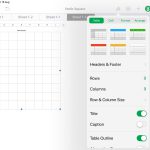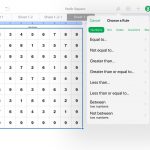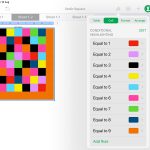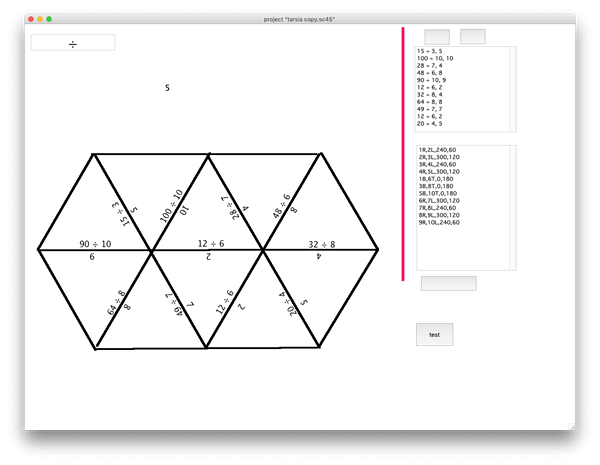As soon as the PISA results came out, the questions, accusations and incriminations began. Blame it on the CfE, blame it on the SNP, blame it on the boogie. I’m not going to blame anyone, there’s plenty of stuff written by plenty of people on the internet already, indeed I’m not sure the PISA results are something to aim for or worry about – Finland seems not to be too concerned – but I am going to write about working through major education reforms in my career to date.
The two major reforms which took place whilst I’ve been a teacher occurred in England and Scotland. In England, I taught through the time of the National Literacy Strategy, the National Numeracy Strategy, the QCA units, the QCA unit plans, SATS tests and OfSTED inspections every four years in a range of schools in England. In Scotland I’ve taught throughout the implementation of the Curriculum for Excellence, and seen at first hand via The Girl, the national assessment procedures.
The reforms in England were massive and to a large degree micro-managed. The Government wanted improvements in literacy and numeracy and wrote strategies to make sure this happened. If there was debate around what ‘good’ literacy and numeracy should look like, I wasn’t part of (I was in my 20s though, so I knew everything anyway). The strategies were written by a group of literacy experts and then rolled out to schools in the autumn and winter to be put into place for the start of the next school year.
I recall the literacy strategy being rolled out in 2 hour staff meetings after school – I hate after school meetings, I’ve done a day of teaching, there is assessment to do and I’m tired: You’re not going to get the best out of me. These meetings were scripted by the government, the trainers read out what we needed to know and we worked through units of work which explained how the strategy worked, how we should plan, how we should teach reading,writing and spelling. We soon spotted that the answers to the trainers’ questions were usually on the next page of the document! For this training we were given a complete strategy, various unit breakdowns of our own, resources (which we needed to make up in school) and some examples of expected work. It was a slog but by September we had stuff in place and away we went with it. The lessons I taught from the strategy weren’t perfect, but there was a structure in place to help me.
Of course, your school didn’t HAVE to follow the literacy strategy, but if you didn’t and the OfSTED or local authority came a calling, your school literacy strategy had better be an improvement on the national strategy. If your SATS results weren’t up to standard then OfSTED might make an extra visit and again, you’d better be getting the national strategy in place or else (or else usually meant your HT retiring or resigning).
Once we had successfully implemented that – well actually by October of that same year – the National Numeracy Strategy was launched. If you’ve had the misfortune to chat to me about this, you’ll know I love the NNS! The Government spotted some of the problems with the literacy strategy and made some key improvements.
The NNS contained examples of questions and ideas you could use, straight out of the folder. The document, like the NLS had learning objectives for each term of each year group (meaning for differentiation there was a progression mapped out). However, the NNS was supplemented with two things I thought were brilliant.
Firstly, there was a 5 day maths course for every teacher in the UK. 5 days out of class (in a hotel at times) to discover the document, talk about it with colleagues from other schools, plan how you would implement it with your class, look at all the resources. Like the NLS it too was scripted, so the Government really were leading this change in EXACTLY the way they wanted it to go. The 5 days were back to back. A full week thinking about nothing more than numeracy. It changed my teaching approach to maths from ‘here’s the book kids’ to something I love to this day. And really it bloody well should have done, bearing in mind the cost of this to the UK taxpayer.
The other wonderful thing was the resources the NNS team made and shared. They created some wonderful teaching programs which I use to this day and they wrote the unit plans. These were highly detailed documents for each unit of work. Unit one was place value it contained 5 plans, one for each day of the week. Each plan was A4 and was pretty much a script for the lesson. There in the same folder (and latterly on CD-ROMS) were the resources (including worksheets) you needed for the lesson. Differentiated. The idea was that these plans were a start point, you changed them to suit the needs of your class. Lots of teachers did and that was great, but even if you didn’t (because you were, like so many teachers lazy  what you delivered was good quality, written by numeracy experts, lessons. If you were new to the job it allowed you to know where to pitch an average lesson and how to piece your maths teaching together over a term. I loved them and still did out the ideas for a concept which my class find tricky to see if I’ve missed anything.
what you delivered was good quality, written by numeracy experts, lessons. If you were new to the job it allowed you to know where to pitch an average lesson and how to piece your maths teaching together over a term. I loved them and still did out the ideas for a concept which my class find tricky to see if I’ve missed anything.
After a year or two, the Government did it again. They released the QCA topic documents. These detailed the teaching for all of the non-core subjects on a lesson by lesson basis. Again, all the information you needed to teach the lesson was contained in the folder. You adapted it, changed the order, added bits in, took bits out but the basic lessons for all your Art, DT, History, Geography, Music, Science, RME and PSE were there. Concurrent to that, the Government noticed that problem solving and investigations was not progressing as well as they wanted, so they created more problem-solving resource and ran another 5 day maths course for two teachers in each school to upskill them in teaching this. Again, resources and knowledge I still use to this day.
Looking back, it seems a great time, with resources aplenty, cash aplenty, but it was hard, hard work at times, with the pressure of OfSTED ready to pounce and the pressure of SATS scores needing to meet targets for school and local authority. For me, giving me start points close to a finished article of a lesson plan or termly plan allowed me to focus on the delivery of the lesson, moving children to their next target (of which they had many) and how I might make these at time dry lessons interesting and meaningful for the children. For teachers, new to the profession it certainly offered a proven scaffold to begin their careers. I loved the support the strategies and unit plans gave me and the time it freed up to think about the needs of the children in my care.
I will discuss the education reforms since I’ve moved to Scotland in my next post. I think it’s possible I moved out of England before things took a turn for the worse, but I’m happy to hear comments from people who disagree with that thought or with things as I recall them from the late 90s and early 2000s























 what you delivered was good quality, written by numeracy experts, lessons. If you were new to the job it allowed you to know where to pitch an average lesson and how to piece your maths teaching together over a term. I loved them and still did out the ideas for a concept which my class find tricky to see if I’ve missed anything.
what you delivered was good quality, written by numeracy experts, lessons. If you were new to the job it allowed you to know where to pitch an average lesson and how to piece your maths teaching together over a term. I loved them and still did out the ideas for a concept which my class find tricky to see if I’ve missed anything.